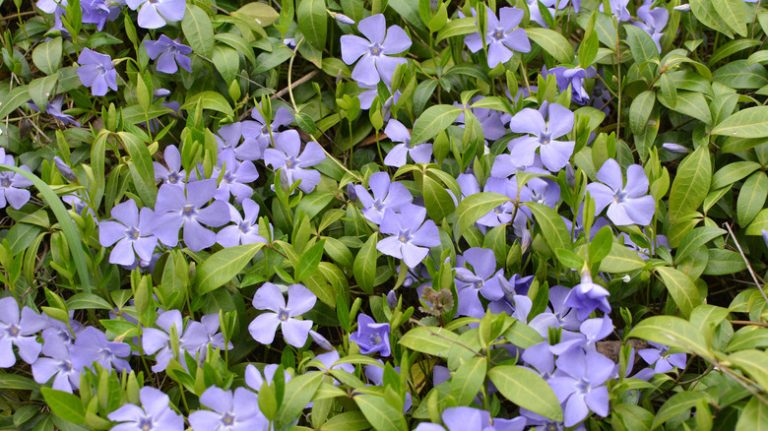The passion flower is a plant that belongs to the Passifloraceae family. It is characterized by its lobed leaves and typically has a woody or semi-woody stem. Passion flowers are known for their beautiful and intricate flowers, which come in a variety of colors. The flowers usually have five sepals and petals, with multiple stamens in the center. Most passion flowers are perennial plants that can reach a height of up to 30 feet and spread wide.
Passion flowers require full sunlight to thrive and are best planted in loose, well-drained soil. They can be grown both outdoors and indoors, depending on the species and climate. Passion flowers are also popular among gardeners who love to attract butterflies to their gardens, as these flowers are known to be a favorite nectar source for butterflies.
There are many species of passion flower, with the most common ones including Passiflora incarnata and Passiflora caerulea. While some passion flowers produce edible fruits, others are mainly grown for their ornamental value. The fruits of the passion flower are typically greenish and oval-shaped, and they can be eaten fresh or used in jams and desserts.
In addition to their beauty and symbolism, passion flowers are also known for their medicinal properties. Passion flowers have been used for centuries to treat various ailments, including anxiety, insomnia, and digestive issues. Please note that if you plan to use passion flowers for their medicinal benefits, it is important to consult with a healthcare professional.
Passiflora caerulea
Passiflora caerulea, commonly known as the blue passionflower or bluecrown passionflower, is a large, wide-growing vine that belongs to the Passifloraceae family. It is native to South America and has become popular in many other parts of the world for its physical beauty and symbolism.
This species of Passiflora is also known for its delicious fruit, which is often called maypops. The fruit is edible and has a brown, woody exterior with a soft, juicy interior. Passiflora caerulea blooms with white flowers that have blue-colored tepals, which are the modified leaves that surround the flower’s reproductive organs. Each flower has ten stamens.
Passiflora caerulea is a perennial vine that requires care and attention. When planting this passionflower, it is important to select a sunny location with well-draining soil. The vine can be trained along a trellis or fence, or it can be allowed to spread along the ground. Passiflora caerulea is a fast-growing vine that can reach lengths of up to 30 feet.
While passiflora caerulea is generally easy to care for, it can be susceptible to pests and diseases. Common pests include aphids, mealybugs, and spider mites. Fungal infections, such as powdery mildew, can also affect the plant. To prevent these issues, it is important to provide adequate air circulation and avoid overwatering. Applying a mulch around the base of the plant can help retain moisture and keep the roots cool.
In some climates, passiflora caerulea can be grown as an indoor vine. It requires bright sunlight and regular watering to thrive. The vine can be pruned to control its size and shape. It is also recommended to fertilize the plant every month during the growing season to promote healthy growth and abundant blooms.
Passiflora caerulea has cultural significance in many parts of the world. In Jordan, for example, the flower is a symbol of heritage and is often used in traditional ceremonies and celebrations. In 1991, the blue passionflower was designated as the national flower of Paraguay. The plant is also recognized by UNESCO as a symbol of beauty and biodiversity.
If you have any questions or need more information about passiflora caerulea, please consult the plant care guides from reputable sources or reach out to the editors of this article.
Passion Flower
The passion flower, also known as passiflora, is a beautiful plant that is typically found growing as a vine in tropical and subtropical climates. It belongs to the Passifloraceae family and is known for its unique and intricate flower blooms.
The passion flower has woody vines that can grow up to three inches in length. The leaves are greenish and lobed, and the flowers are solitary and white or blue in color. The flower has a wide, open shape with a greenish-brown center and long stamens, giving it a distinctive appearance.
The passion flower is most commonly found in North America, particularly in the eastern and Gulf Coast regions, as well as in Florida. It is a popular plant for gardening and landscaping, as it can add a touch of beauty and elegance to any outdoor space.
In addition to its aesthetic appeal, the passion flower also has many practical uses. The fruit of the passionflower, called maypops, is edible and has a delicious taste. It is often used in cooking and baking, or can be enjoyed on its own.
Passion flowers also have medicinal properties and have been used for centuries in traditional medicine. They have been thought to have calming and sedative effects, and can be used to treat anxiety, insomnia, and other similar conditions.
If you are interested in growing passion flowers, please note that they require full sun and well-drained soil. They can be grown both indoors and outdoors, depending on your climate. Passion flowers are typically not susceptible to many pests and diseases, but fungal infections may occur in humid conditions.
The passion flower is a remarkable plant that is loved by gardeners and plant enthusiasts around the world. Whether you are a seasoned gardener or just starting out, the passion flower is a great choice for adding color and beauty to your outdoor space.
References:
UF/IFAS Gardening Solutions. (n.d.). Passionflower, Maypop. Retrieved from https://gardeningsolutions.ifas.ufl.edu/plants/ornamentals/passionflower-maypop.html
UNESCO. (n.d.). Passiflora Incarnata L. (Passionflower, Bluecrown Passionflower). Retrieved from https://unesco.uci.edu/species/passiflora-incarnata-l-passionflower-bluecrown-passionflower
Image by Charles Barilleaux licensed under CC BY-NC 2.0
Characteristics
The Passion Flower, or Passiflora, is a family of plants that includes over 500 species of vines, shrubs, and herbaceous plants. It is widely grown for its exotic blooms and delicious fruit.
The leaves of the Passion Flower are alternate and typically deeply lobed. The flowers are usually solitary and showy, with a wide range of colors and forms. They are known for their intricate floral structures, which have symbolic meaning in some cultures.
Passion Flowers can grow to a height of three inches to forty feet, depending on the species. They have tendrils or stems that allow them to climb walls and other support structures. Some species of Passion Flowers are shrubs, while others are herbaceous plants.
Passiflora incarnata, also known as Maypop or Purple Passion Flower, is a species that is native to the southeastern United States, from Florida to Texas. It is a popular choice for backyard gardening as it attracts butterflies and is relatively easy to care for.
In terms of foliage, Passion Flowers have green leaves that can be used to make tea. The fruit of the Passion Flower is delicious and can be eaten fresh or used in various culinary preparations.
In Florida, the University of Florida Institute of Food and Agricultural Sciences (UF/IFAS) has made efforts to determine the characteristics of Passion Flowers, including their assessment as potential hosts for pests and fungal diseases. The UF/IFAS encourages gardeners and homeowners to select Passion Flower plants that are well-adapted to the local climate and resistant to common pests and diseases in the area.
Growing Passion Flowers in indoor environments requires some extra care. These plants need sufficient light and humidity to thrive. It is recommended to place them in a location that receives at least six hours of sunlight per day and to provide regular misting or use a humidifier to maintain the appropriate humidity levels.
In terms of planting, Passion Flowers can be grown from seeds or propagated from stem cuttings. They prefer well-drained soil and benefit from the addition of compost or mulch. Please consult local gardening resources for specific care instructions for your region.
The Passion Flower has gained symbolism in various cultures and regions. In the Christian tradition, it is associated with the crucifixion of Jesus Christ, with the different parts of the flower representing different aspects of the Passion. In Jordan, the Passion Flower is a national symbol and is featured on the country’s currency. It also has significance in the Gulf region and is sometimes called “Jordan Flower” or “Gulf Flower”.
When researching Passion Flowers, it is important to consult reliable external sources and experts in the field to ensure accurate information. Please refer to citations and editors’ notes to validate the information provided.
Planting and Care
Passionflowers are beautiful and unique plants that are valued for their stunning, colorful flowers and delicious fruits. If you’re interested in growing passionflowers in your garden, here are some tips for planting and care:
- Selection: When selecting passionflowers for your garden, choose a variety that is suitable for your specific climate and soil conditions. Some popular varieties include Passiflora caerulea and Passiflora incarnata.
- Planting: Passionflowers should be planted in loose, well-draining soil. Dig a hole that is twice the diameter and slightly deeper than the root ball of the plant. Place the plant in the hole, backfill with soil, and gently firm the soil around the base of the plant. Water thoroughly after planting.
- Sunlight: Passionflowers thrive in full sun to partial shade. Make sure the planting location receives at least 4-6 hours of direct sunlight per day.
- Watering: Passionflowers have moderate water needs. Water deeply but infrequently, allowing the soil to dry out slightly between waterings. Avoid overwatering, as it can lead to root rot and other fungal diseases.
- Mulching: Applying a layer of mulch around the base of the plant can help conserve moisture, suppress weed growth, and insulate the roots during winter.
- Fertilizing: Passionflowers are not heavy feeders, but you can fertilize them once a month during the growing season with a balanced, slow-release fertilizer. Follow the package instructions for application rates.
- Pruning: Prune passionflowers in early spring to remove dead or damaged wood and promote new growth. You can also prune to control the size and shape of the plant.
- Pests and Diseases: While passionflowers are generally pest and disease resistant, they may occasionally be affected by aphids, scale insects, or fungal diseases. Inspect your plants regularly and take appropriate action if you notice any issues.
- Winter Care: In regions with cold winters, passionflowers may need protection from freezing temperatures. Place a layer of mulch around the base of the plant and wrap the vines with burlap or other protective material.
- Indoor Growing: Passionflowers can also be grown indoors in containers. Select a large pot with good drainage and use a well-draining potting mix. Place the plant in a sunny window or under grow lights and water as needed.
By following these planting and care guidelines, you can enjoy the beauty and uniqueness of passionflowers in your own garden.


